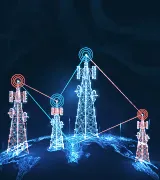Managed XDR (MXDR) is a service-led security solution that uses a wide range of telemetry sources to better unify and automate incident investigation, analysis, and response.
Extended Detection and Response (XDR) is the technology at the heart of MXDR. It is a security platform that unifies telemetry across multiple security layers, such as networks, endpoints, applications, email, identities, and cloud services, into a single platform.
Read on to discover how, when deployed effectively, Managed XDR can help mitigate many of the risks associated with managing security in-house to deliver broader visibility and support a more robust security posture.
What is Managed XDR (MXDR)?
MXDR is a comprehensive cybersecurity solution that provides advanced detection and response capabilities through a powerful combination of security technologies and specialist expertise.
In a constantly changing threat landscape, organizations must ensure they are prepared to respond effectively to new and emerging threats by leveraging the best technologies. The “X” in Managed XDR stands for “extended” because it unifies data from a wide range of data sources, including previously isolated security tools across an organization’s technology stack. This facilitates enhanced visibility across the attack lifecycle and more efficient investigation, threat hunting and response across networks, cloud services, email, identities, and Software-as-a-Service applications.
MXDR can be delivered via either a closed XDR or open XDR approach. Closed or native XDR is delivered via one technology suite from a single vendor, while open or hybrid XDR uses one vendor, for example for EDR, and integrates third party data from other vendors. The optimal approach will vary between organizations, depending on existing investments, budget and roadmap.
Security Orchestration, Automation and Response (SOAR) plays a crucial role in XDR, easing the burden on in-house security teams by allowing specific incidents to be responded to automatically. MXDR provides a critical advantage for in-house teams, who are freed up to focus on the key issues, with response playbooks and automated actions accelerating the incident response process.
Companies using a wide range of security point solutions risk being overloaded with alerts that lack context, creating more work for their security teams and leading to delays in addressing threats. Recent Kroll research revealed that, such was the complexity it created, the more security tools organizations used, the more incidents they experienced. Managed XDR significantly reduces this burden by providing multi-layered visibility and streamlining security analysis, investigation, and response, coordinating security tools into a single platform.
By acting as a virtual extension of in-house resources and providing a turnkey, outcome-based service, MXDR significantly reduces the costs associated with establishing and maintaining an in-house security team and infrastructure. Managed XDR enables businesses to continually improve their defenses by drawing on insights gained through frontline threat intelligence.




